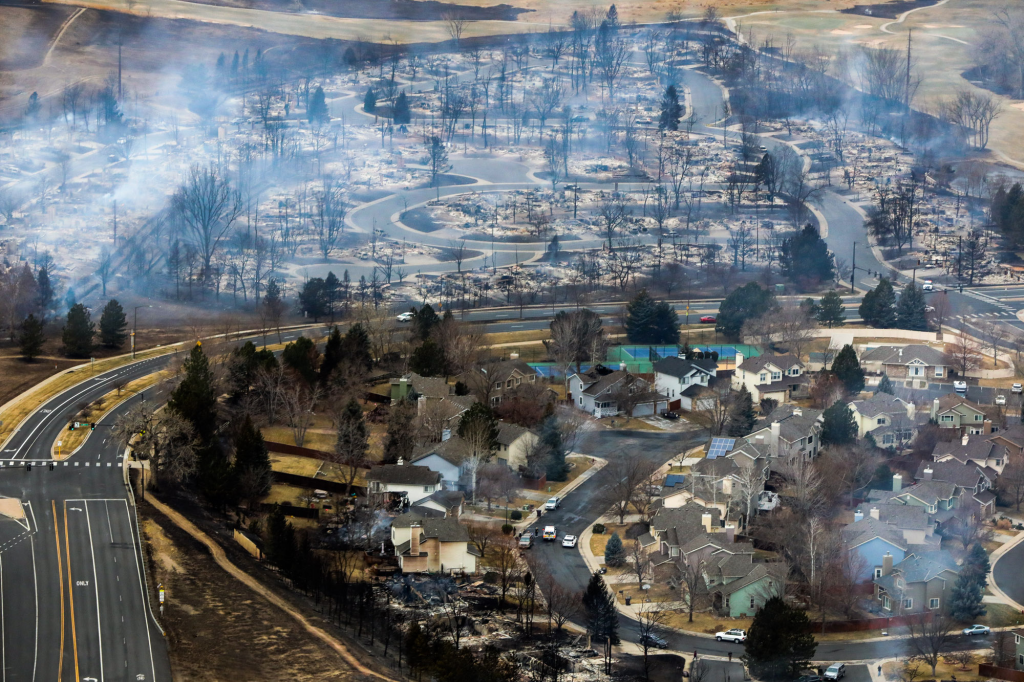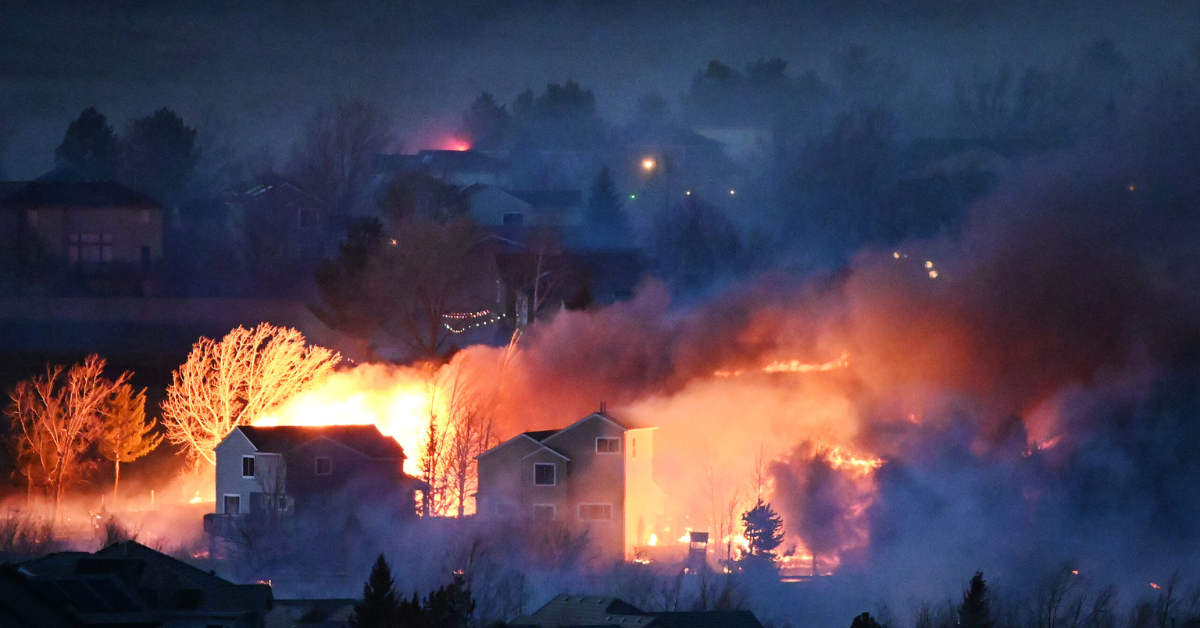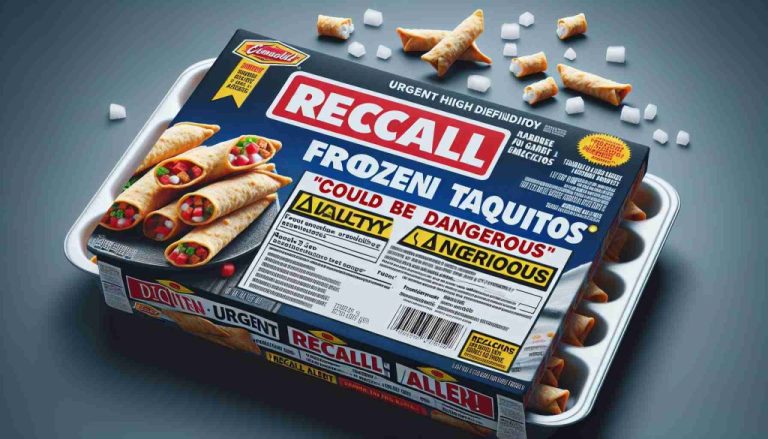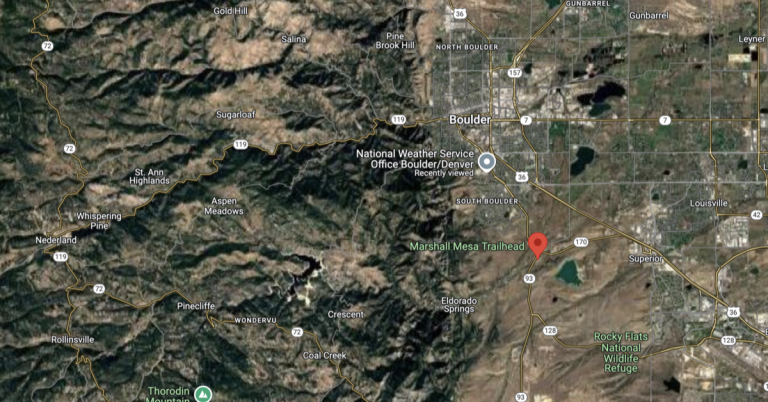Three years after Colorado’s most destructive wildfire, experts are still reflecting on the events that led to it and whether a similar disaster could occur again. The Marshall Fire, which started on December 30, 2021, became the most destructive wildfire in the state’s history.
It wiped out over 1,000 homes, damaged 149 more, caused more than $600 million in property damage, and tragically claimed two lives in Boulder County. The destruction affected not just homes but also dozens of commercial businesses.
In the three years since, experts have been investigating what led to such a catastrophic event and whether the same conditions could happen again. Researchers from the National Oceanic and Atmospheric Administration (NOAA) have found that a very specific set of circumstances led to the fire.
These included a wet spring followed by a dry fall, which made the vegetation in the area unusually dry. High winds, which were essential in helping the fire spread quickly, also played a major role. Fire investigators later concluded that the fire was human-caused, with several potential starting points identified.
Andrew Hoell, a researcher at NOAA’s Physical Science Laboratory in Boulder, notes that the fire was an extremely rare event. He says that it’s unlikely we will see another fire exactly like this one, largely because of the unique way the wind moves in the Front Range area, a phenomenon known as “mountain wave” winds.

Despite this, Hoell highlights a major factor that can increase the risk of such destructive fires—where people have chosen to build homes. “If there is a fire that begins, and there are winds on those days, this is a possibility, just because of how close those homes are built to the natural environment,” he explains.
A 2023 study by the Colorado State Forest Service reveals that over 2.5 million people live in the wildland-urban interface (WUI) in Colorado. The WUI is a term used to describe areas where human infrastructure, such as homes and roads, is located near natural landscapes that are at risk of wildfire.
More than 1 million of these residents live in regions with a moderate to severe risk of wildfires. Hoell suggests that while the Marshall Fire was unique, the growing number of people living in these high-risk areas is a concern. The fire season in Colorado and other western states has also been lengthening due to rising temperatures.
According to Hoell, the increasing temperatures are having a significant impact on the environment. “In terms of just warming temperatures, you’re basically reducing the amount of time during the year in which you have cold temperatures, that you have snow on the ground,” he explains. As a result, the fire season is becoming longer, not just in Colorado but across the western United States.

The snowpack and snowfall play a crucial role in determining wildfire risks. They affect the moisture levels in the soil and the dryness of vegetation, both of which can influence how severe a fire might be or how quickly it spreads.
Hoell points out that studies, including those from NOAA, have shown that increasing aridification—meaning the drying out of the land—leads to drier vegetation, which provides more fuel for fires. This process contributes to larger and more dangerous fires.
The evidence is clear that rising temperatures are contributing to longer and more intense fire seasons. Hoell says this trend is likely to continue, as warmer temperatures are affecting the area burned by wildfires and the duration of the fire season.
To help mitigate the risks, state agencies in Colorado, Utah, and Wyoming maintain maps that show fire risk levels for different areas. NOAA also runs a program focused on forecasting and preparing for wildfires, aiming to reduce the impact of future fires.
Overall, while experts agree that the specific conditions of the Marshall Fire were rare, the combination of growing populations in high-risk areas and longer, hotter fire seasons means that the possibility of such destructive fires cannot be ruled out. With the ongoing effects of climate change, it’s clear that the risk of wildfires in Colorado and the western United States remains a serious concern for residents and experts alike.
Disclaimer: This article has been meticulously fact-checked by our team to ensure accuracy and uphold transparency. We strive to deliver trustworthy and dependable content to our readers.







Leave a Comment